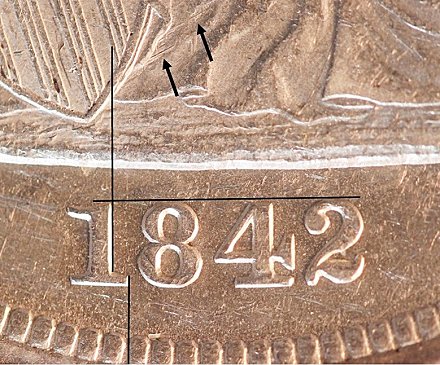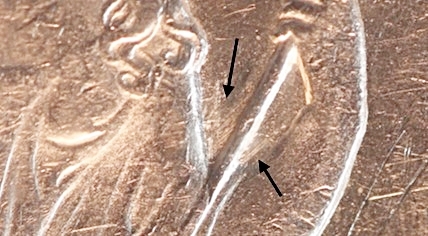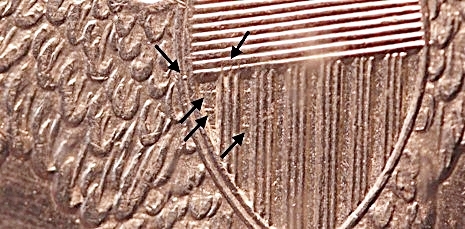|
|
Comments: This is the only use of Obverse 1 and the first of four uses of Reverse A in 1842. Reverse A is transitional, later used to strike die marriage OC-1 in 1843. |
Obverse 1 The photo below shows the Obverse 1 attribution grid. Also note the die lines slanting up to the right just right of the end of the scroll.  1842 Obverse 1 attribution grid and die lines right of scroll Obverse 1 also displays notable die lines just above the right elbow, pictured in the photo below.  Obverse 1 die lines above right elbow Obverse 1 is very similar to Obverse 7, so much so the I mis-attributed two OC-8 examples as OC-1 in my research for the first edition. The marks above the elbow are similar. The date exhibits minor position differences. Be very careful when attempting to differentiate the two die marriages. OC-1 is much more common.
|
Reverse A Reverse A displays several notable die lines in the upper left shield recesses. These are pictured in the photo below.  1842 Reverse A die lines in shield recesses
|
